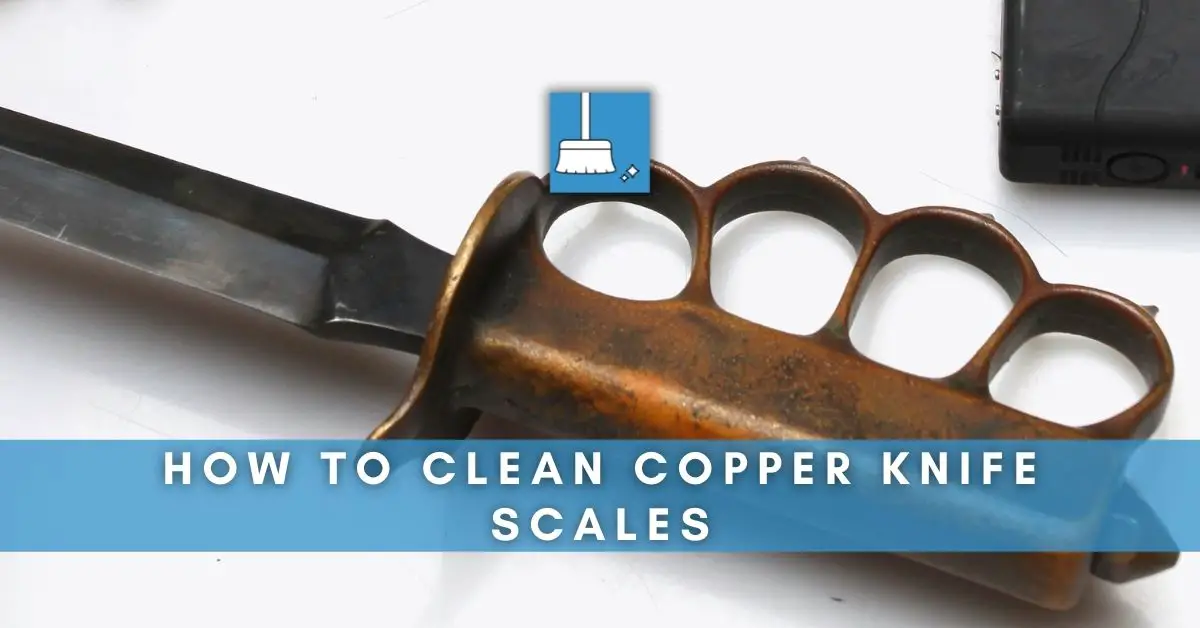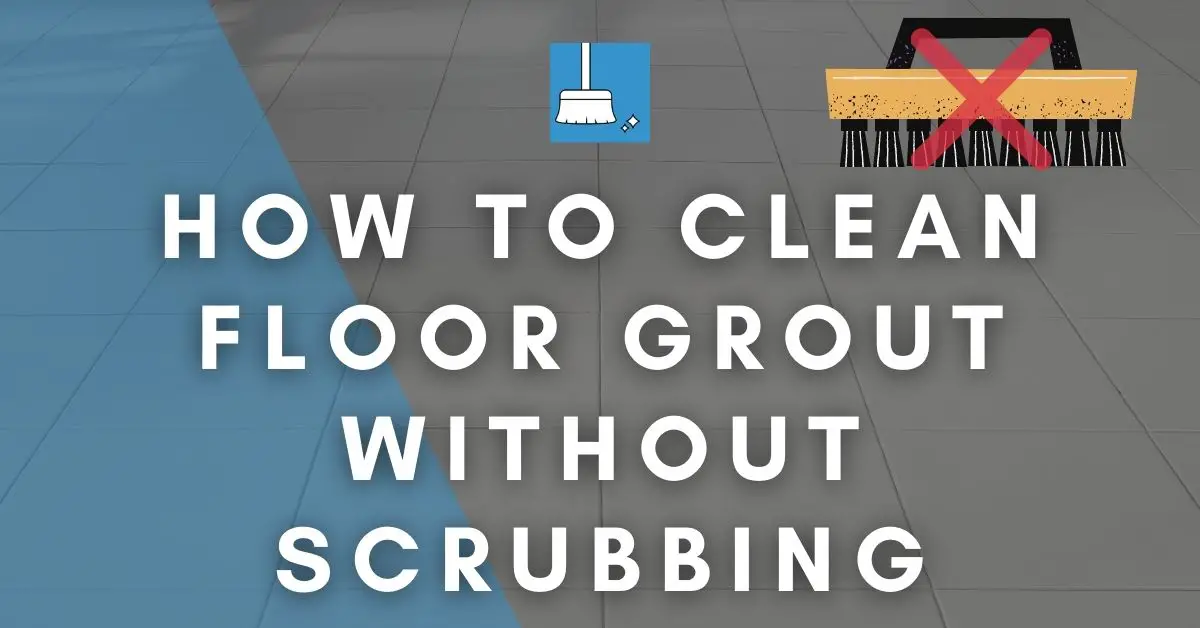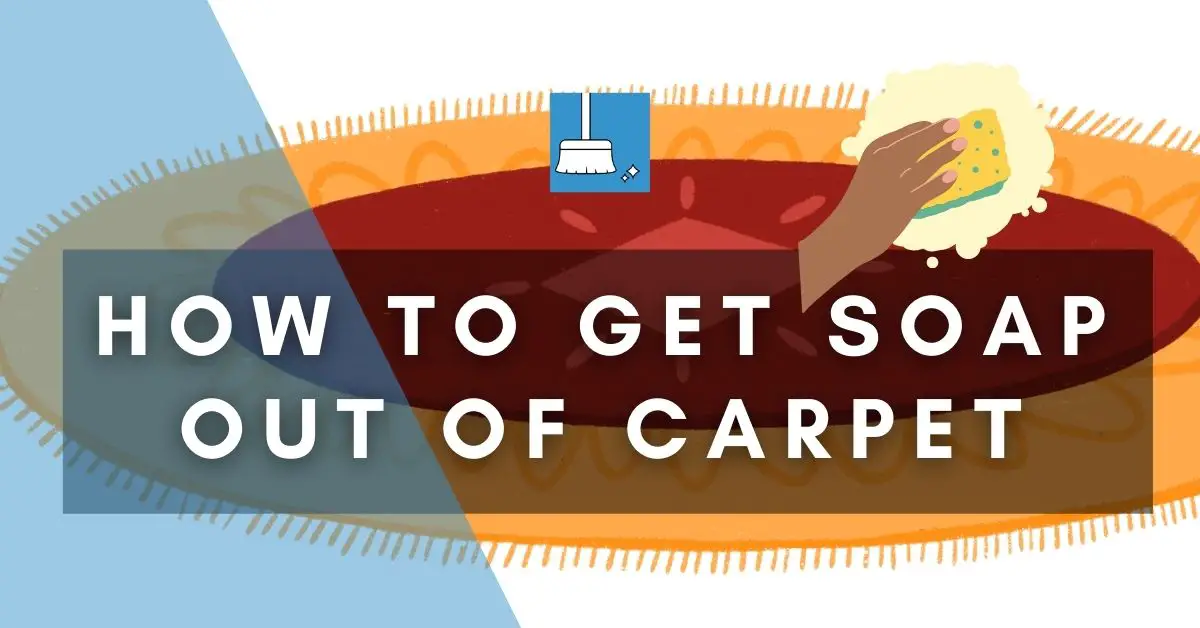Cleaning your knife scales can be confusing and difficult when you’re not familiar with handling copper. Regular soap and water probably weren’t enough to restore your copper knife scale back to the way it once was.
Since you don’t want to risk damaging your copper scales with random methods, we are giving away easy step-by-step proven methods here that you should use to clean your copper knife scales.
But first, let’s see what exactly happened to your copper knife scale.
What Happened to Your Copper Knife Scale?
Over time your copper knife scales will patina or oxidize usually due to a chemical reaction with surface metals or the surrounding environment. When this happens, it can turn a series of different colors, stick to your fingers, or start to smell bad.
Let’s specifically talk about what patina is, what it does, and what it looks like.
Patina
Copper knife scales can form patina when exposed to sulfur and oxide compounds giving the copper a blueish-green layer of corrosion. The way your patina look depends on the upkeep and storage of your copper knife scale.
For instance, if you leave it out in the open in a moist harsh environment it will have a very ugly green tarnish to it. When your copper knife scale patinas an ugly brown or green color it also loses its luster or shine.
How to Clean Copper Knife Scales (5 Methods)
Now that we know what happened to your copper knife scale and what patina is we can now try to get rid of it. These methods and products will effectively get the patina or tarnish off your copper knife scale and restore its shine.
All the methods or products are relatively cheap and have basic instructions that won’t require any harsh scrubbing. The products don’t contain anything harsh and won’t further tarnish your copper knife scale.
Most of the products can be found at your local grocery or hardware store and online.
Method 1: Lemon and Salt
Lemons contain acid that has antibacterial, antiseptic, and bleach properties. It helps to clean and shine, and when paired with salt it’s powerful enough to replace all those other harsh cleaning products.
This is a good natural way of cleaning your copper knife effectively while simultaneously giving it a nice shine. Conveniently most of the things that you’ll need for this method are likely already in your own home.
YOU’LL NEED
1- Regular-sized lemons
2- Salt
3- Small bowl
4- Abrasive sponge
STEPS
STEP 1: Disassemble your copper scale knife if possible, to make cleaning easier and more thorough.
STEP 2: Wash your copper scales with regular soap and water to get off any oils or dirt.
STEP 3: Cut your lemon in half. In a small bowl, take half of the lemon and squeeze it in the bowl. Take 2 teaspoons of salt and mix it with the lemon juice.
STEP 4: Take your knife scales and sift them through the solution for a minute or two. Then take your abrasive sponge and lightly scrub your copper scales.
STEP 5: Repeat step 4 until you get your desired result and repeat step 3 if you need more of the solution.
STEP 6: Finally, rinse off your copper knife scale and reattach it when dry.
Method 2: Barkeepers Friend and Brasso
Barkeepers Friend is commonly used to clean a lot of metals including copper. It’s an acidic cleanser that helps get rid of mineral deposits and rust stains. It’s non-abrasive so it won’t harm your copper knife scale.
After using Barkeepers Friend you’ll be left with micro-abrasions, that weren’t visible before, that’s where Brasso comes in. Brasso is a metal polish that also helps remove tarnish, micro-abrasions, and buildup while giving it a nice shine.
This is also a simple method that won’t require any scrubbing. Both products can be found at your local hardware store.
YOU’LL NEED
1- Barkeepers Friend
2- Brasso
3- Cloths
4- Gloves
STEPS
STEP 1: Disassemble your copper scale knife if possible, to make cleaning easier and more thorough.
STEP 2: Take your cloth and put a little bit of Barkeeper’s friend on them, you don’t need a whole lot. Lay your copper scale in the cloth and start spinning or moving it in the cleanser. Move it from one end of the scale to the other.
STEP 3: Keep moving or spinning your copper scale in the cloth until it has your desired look, it shouldn’t take long.
STEP 4: When applying Brasso use gloves, your hands will get dirty. Take your cloth and apply some Brasso. Move or spin your copper scale inside the cloth until you get your desired look.
STEP 5: Rinse off your copper scale and reattach it when dry.
Method 3: Buffing Wheel
Buffing wheels help restore shine to metals like copper. This method provides a faster way of yielding more consistent results and is very much worth the effort. They can get into more hard-to-reach areas that you might have missed or can’t get to.
It will not only clean and shine your copper scale, but it will make it incredibly smooth. This method is a little more extensive but will give guaranteed and lasting results.
You can find a buffing wheel at your local hardware stores like Lowe’s or Home Depot.
YOU’LL NEED
1- Buffing Wheel
2- Buffing Wheel Compound
3- Tumbler (pickle jar with stonewash stones)
4- Cloth
5- 800-1000 grit sandpaper
STEPS
STEP 1: Disassemble your copper scale knife if possible, to make cleaning easier and more thorough.
STEP 2: Apply some buffing wheel compound to the buffing wheel. Make sure your buffing wheel is plugged up and powered on.
STEP 3: Take your copper scale and hold it against the buffing wheel. Move your copper scale side to side holding it against the wheel.
Then, move your copper scale up and down holding it against the wheel. Make sure you get all the areas that you want.
STEP 4: If you are satisfied with the results from the buffing wheel, then you can skip the rest of the steps.
But if you want to take it a step further and ensure the cleanliness of your copper knife scale then you can stonewash it in a tumbler and sand it with 800-100 grit sandpaper.
STEP 5: Get your tumbler out and place your copper scales inside the tumbler and tumble it for 10 minutes.
STEP 6: Take your sandpaper and rub it up and down against your copper scale, until you get the desired look.
STEP 7: Repeat steps 5-6 if needed and reattach your copper knife scales.
Method 4: Boiling Water
Boiling water is a common method people use to get stains out of metals like copper. Boiling water can help burn off unwanted bacteria and tarnish like patina.
This doesn’t require you to use any special products or to do any hard scrubbing. But it does require a lot of time. Many of the things needed for this method are likely already in your home.
YOU’LL NEED
1- Large Pot
2- Water
3- Vinegar
4- Salt
5- Cloth
STEPS
STEP 1: Disassemble your copper scale knife if possible, to make cleaning easier and more thorough.
STEP 2: Take your large pot and place your copper scale inside without adding anything first. Fill the large pot with a generous amount of water making sure the copper scale is fully submerged. Add a cup of vinegar and a tablespoon of salt mixing it all together.
STEP 3: Turn the heat up and bring the solution to a boil, when the solution reaches a boil adjust the heat to make sure it doesn’t all evaporate.
STEP 4: When you see the discoloration coming out of the copper, after 15 minutes, cut off the heat and leave the solution to cool for 30 minutes to an hour.
STEP 5: Once the solution has cooled remove the copper scale from the solution. If you still see any tarnish or patina. You can use the cloth to lightly scrub it off.
STEP 6: Reattach your copper knife scale.
Method 5: Ketchup
Ketchup may seem like an odd thing to use for cleaning, but the vinegar in ketchup has acid that works as a mild cleanser. Also, the tomatoes have citric acid like lemons which help aid the vinegar in cleaning.
When paired with salt it can help melt away all the patina and tarnish on your copper knife scale. This method is simple, and you likely already have these ingredients in your home.
YOU’LL NEED
1- Small bowl
2- Ketchup
3- Salt
4- Cloth
STEPS
STEP 1: Disassemble your copper scale knife if possible, to make cleaning easier and more thorough.
STEP 2: Take your small bowl and apply the ketchup and salt, mixing them together to create the solution. Take the solution and apply it to a cloth.
STEP 3: Take the cloth with the solution on it and rub it all over your copper scale, making sure all the parts you want clean are covered.
STEP 4: It’s best to let the solution sit on the copper for 30 minutes to help draw out the stains. If the tarnish doesn’t appear to be coming out you can take the cloth and start rubbing it out.
STEP 5: Once all the tarnish or patina is out you can rinse the solution with warm water and pat dry.
STEP 6: Reattach your copper knife scale.
Maintaining Your Copper Knife Scales
When your copper scales patina, it might come out pretty and you might like it. But other times the patina can come out an ugly green or brown tarnish. Whatever the case however your patina turns out is a result of how you take care of your copper knife scales.
So here are some tips on how to keep your copper knife scale up to par.
1- Regularly wash your copper knife scale with mild soap and water, you don’t want to use chemicals all the time. As that can start to break down the protective wax and tarnish the copper.
2- Apply Brasso or some type of wax every few weeks so that the copper scales can retain luster and shine, while also providing a protective coat.
3- Super glue is also a way to protect your copper scales for an exceedingly long time. Put on some gloves and apply a layer of super glue all over and leave it to dry for 24 hours.
4- Make sure you store your copper knife in a dry place where it’s not exposed to the elements this will help slow down patina. Or at least make the patina not look so tarnished.
Conclusion
Whether they are aluminum knives or copper knives, stained or tarnished handles can be cleaned in simple steps.
Get that patina and tarnish out of your copper scales and enjoy a new and improved shiny copper knife.





